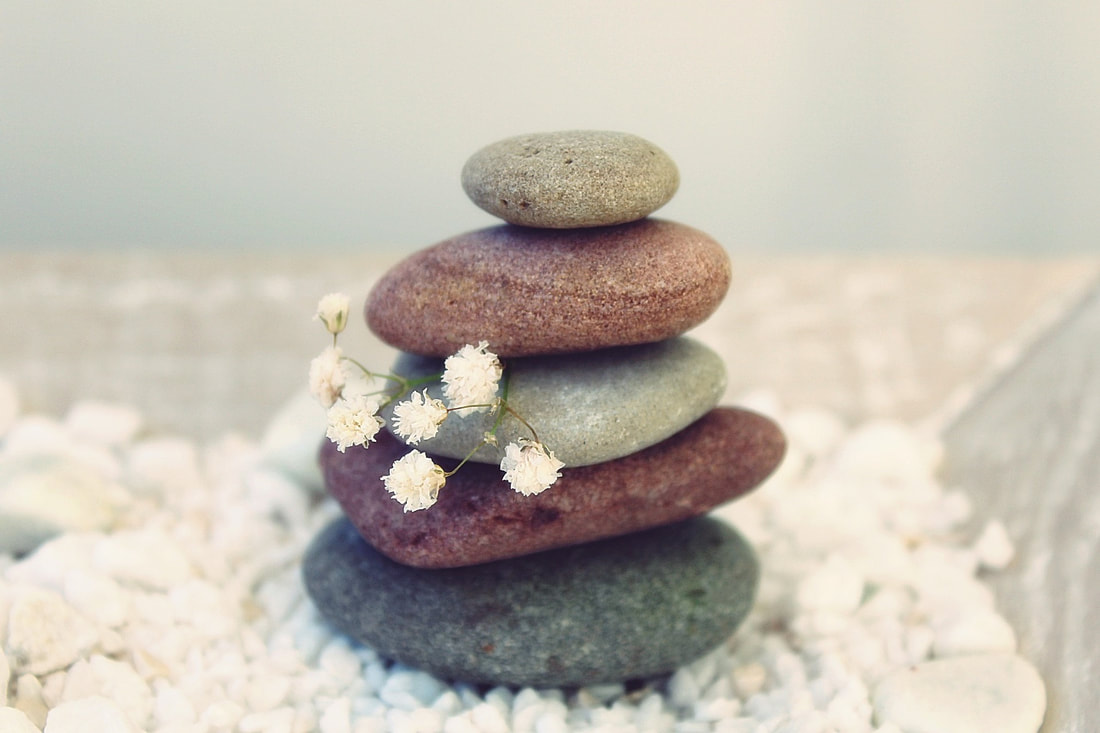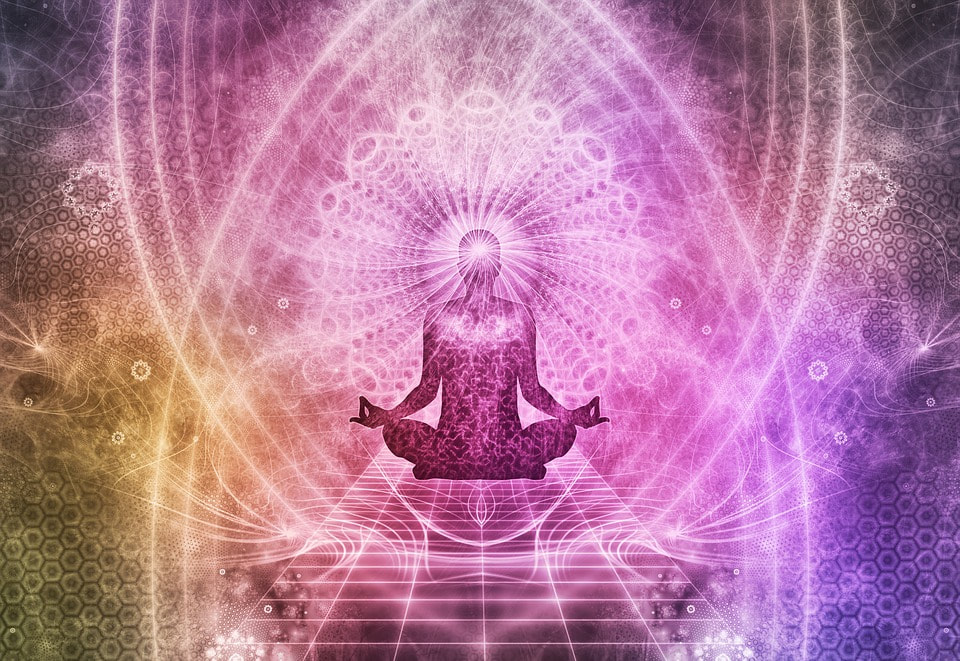Thinking is only a small aspect of consciousness. Thought cannot exist without consciousness, but consciousness does not need thought. ― Eckhart Tolle
Thoughts are mysterious and elusive entities which so frequently appear in our heads that they are considered to be an essential part of our identity. Moreover, we are so identified with them that many of us have completely accepted the famous quote by Descartes: I think, therefore I am.
But that is not true. Our true nature is not determined by thoughts. In fact, they obscure it, as clouds obscure the Sun.[1] It’s unquestionable that the practical value of thoughts in our lives is immense. Their role in analyzing and structuring a huge stream of data flowing into our minds is indispensable. Their power of generalization and abstract contemplation, of ‘seeing the wood despite the trees,’ is also of utmost importance to us. The mankind has made great advances in science and technology, and, of course, that wouldn’t be possible without the thinking process. Thinking is one of the essential stages of our spiritual evolution. In the first phase, conscious beings are thoughtless, enjoying the calmness of pure presence in the Now. They are partially conscious of their surroundings, but they are not conscious of themselves. Such beings are animals, for example. In the next phase, thanks to the thinking process, conscious beings are able to become self-aware and to intentionally expand their consciousness. In the final stage, they become thoughtless again, because they don’t need thoughts anymore. They don’t need to analyze or generalize, as they simply know. The subject and the object, the inner and the outer reality merge, and they don’t need any intermediary between them. Are Thoughts Obstacles to Spiritual Enlightenment? Therefore, if we want to achieve the final spiritual awakening and inner freedom, we should transcend thoughts. Or at least some spiritual traditions teach us so. Accordingly, the main question related to our spiritual growth could be: what to do with thoughts in our practice? Or, should they be considered as obstacles to spiritual enlightenment? [1] A similar thing can be said for emotions, but they are not within the scope of this article. However, emotions can also be regarded as the ‘thoughts of our body,’ so they can be dealt with in like manner. If we want to achieve the final spiritual awakening and inner freedom, we should transcend thoughts.
So…let’s say we are meditating. Perhaps we are simply trying to focus on our awareness. Or we are concentrating upon a candle, or praying, or doing a mantra meditation. Maybe we are trying to consciously breathe. Or doing loving-kindness meditation. No matter which kind of spiritual practice we are engaged in, we will be repeatedly and inevitably dealing with some distractive thoughts. We’ll get immersed in them, each time, until we become aware of the fact that our practice has actually been interrupted.
It seems that thoughts are obstacles to a smooth spiritual practice. Are they really? Should we be fighting them? No matter which kind of spiritual practice we are engaged in, we will be repeatedly and inevitably dealing with some distractive thoughts. 
Ways of Dealing with Thoughts in Meditation
The vast majority of meditative techniques all around the world deal with apparently distracting thoughts in these ways:
During our mindfulness practice, we are trying to consciously experience the present moment. Our mind is calm as we stay fully conscious of our breathing, of each movement of our body, of visual textures and patterns in the surrounding, of sounds, tastes, smells or anything else that is entering our senses. However, when a thought or emotion arises, our mindfulness practice essentially breaks down. We get immersed in the thought and completely forget to be consciously present. Only when we become aware that we’ve forgotten to be mindful, then we are able to accept the thought and return to the present moment. But is this a right approach? Thoughts are coming back again and again. Just when we think we succeeded to calm down our mind for several minutes, hours or even months, and have entered a state of deep and apparently irreversible inner peace, a surge of thoughts, emotions and other mind content rushes into our being and destroys our peace completely. Aren’t we subtly suppressing our thoughts and emotions by simply ignoring or acknowledging them before returning to the present moment? It seems so, as everything we suppress must emerge again, sooner or later. That’s the case with thoughts and emotions, too. Aren’t we subtly suppressing our thoughts and emotions by simply ignoring or acknowledging them before returning to the present moment? It seems so, as everything we suppress must emerge again, sooner or later.
How not to suppress them? Is there a way to include these elusive entities into our conscious existence?
How to be aware and think at the same time? That’s certainly not an easy task. This ability cannot be achieved by having an ‘a-ha’ moment or a sudden shift in understanding. It’s a skill that must be learned and gradually developed. Is there a way to include these elusive entities into our conscious existence? It’s a skill that must be learned and gradually developed.
How to train the mind for conscious thinking?
The first part of this training is certainly mindfulness itself. We should exercise keeping the state of pure awareness within all circumstances. Here is a comprehensive article on mindfulness that actually encompasses many possible situations in which we should exercise it. At the same time, we can develop our ability of conscious thinking. First, you need to bring yourself into a state of pure consciousness, presence without thought. From that state, you will be able to practice conscious thinking a lot more easily. You will welcome any thought with your full presence. Here are a few pieces of advice on how to quickly enter the state of presence. Of course, you can apply any of them or use your own method.
First, you need to bring yourself into a state of pure consciousness, presence without thought. From that state, you will be able to practice conscious thinking a lot more easily. You will welcome any thought with your full presence.
When you bring yourself into the state of pure consciousness, try to stay in it as long as possible and watch for the thoughts that come in. Carefully keep the balance between consciousness and thinking. You should do both: be fully present and think. You don’t immerse yourself in thoughts; the thoughts are immersed in your conscious presence instead.
By doing this way, you will deidentify from the thought, but will still be thinking efficiently. Moreover, your thinking will be almost perfect. There will be no redundant thoughts; you will be able to deliberately bring them up into your conscious mind and they will excellently serve their purpose. How do you deidentify from thoughts during meditation or resting time? Here is an exercise for you:
This exercise should be done many times if you really want to master the practice.[1] [1] You can also learn the RS Meditation – a method in which you don’t ignore or suppress the emerging thoughts and emotions during the sitting, but completely re-integrate them into your being. Here is the article on this method. Your thinking will be almost perfect. There will be no redundant thoughts; you will be able to deliberately bring them up into your conscious mind and they will excellently serve their purpose. 
Making the Conscious Thinking Habitual
Our experience of reality is both external and internal. As we experience the external world through five senses, our thoughts reflect these types of experience. You may notice that your thoughts can be of a visual type, i.e. inner pictures or movies, when you think of today’s conversation with your boss, for example. Or, you may be still hearing in your head the yesterday’s loud cry of your child having a cold. You may have any other impression in your mind – a memory of touching someone, a pleasant scent of your girlfriend, or a great taste of food from the nearby restaurant. Note that there is an additional type of thoughts – the abstract, pure ideas. They are neither visual nor auditory or related to any other sense. They are the subtlest type of thoughts, but they also should be included into our practice of conscious thinking. You definitely need a comprehensive, step by step approach. For the beginning, you can make a list of several most common situations that are present in your thoughts. Visualize each of them, one by one, while staying present. In order to train properly your mind to think consciously, you have to recreate repeatedly all types of thoughts: visual, auditory, and those related to smell, taste, and touch. Each time you need to stay present. Visualize things. Imagine certain sounds, senses, tastes and smells in your inner being, and at the same time be conscious of them and of yourself. For an untrained mind, it's definitely a difficult task. But over time, as you continue with these exercises, you will find it more and more easy. If you embed the conscious thinking training into your meditation sittings, you will steadily and inevitably master this great skill.
Create a plan for your mental training. I would recommend including it into your everyday meditation sessions, preferably at the end of each session. (Of course, I presume that you have already established your regular meditative practice, which is extremely important for your personal transformation.) That way you will take advantage of the calmness achieved during the meditation. If you embed the conscious thinking training into your meditation sittings, you will steadily and inevitably master this great skill.
Next Stage of Expansion of Your Consciousness When you master the skill of conscious thinking, you’ll be ready for the next stage: developing an all-inclusive awareness in everyday life. The aim is to transform your everyday narrow attention into diffuse, wide attention which encompasses the whole your inner and outer experience here and now. In his great book, “The Open-Focus Brain,” American clinical psychologist Les Fehmi explains this approach in great detail. The aim is to transform your everyday narrow attention into diffuse, wide attention which encompasses the whole your inner and outer experience here and now.
To develop the all-inclusive awareness, you will have to practice the following seven-step exercise that will bring your mind into a deep state of diffuse, wide and all-embracing attention which will also include your thoughts:
1. Entering Pure Consciousness Do the Dissolving the Temporary I technique. You will enter the state of pure consciousness which will be a great starting point for the whole exercise. It will also allow you to relax immediately. 2. Wide Visual Attention Look at the ceiling and pick up only one distinctive point on it. (This we can call the ‘physical attention,’ as opposed to ‘mental attention,’ which means to focus your mind externally or internally on something.) Concentrate on that point for 15-30 seconds. If any thought arises, just accept it, and return your physical and mental attention to the point on the ceiling. Then, while keeping your eyes fixated on the point, extend your mental attention to a circular area around the point. Slowly extend the area of your mental attention, while keeping your physical attention at the chosen point. Wander around the room for a while with your mental attention. If your eyes unintentionally move, simply return them to the first point of the physical attention, and continue with the other parts of your eyesight, that are preferably more away from the physical point of attention. You may even try to become aware of the things behind your physical eyesight. After several minutes of shifting your mental attention around, try to immerse yourself into a unified attention - be mentally attentive of your physical point and everything else. 3. Wide Auditory Attention Now include sounds into your wide attention. Begin with only one sound and continue with the inclusion of all other sounds, all the while keeping your visual wide attention, too. 4. Body Awareness Include your bodily sensations, one by one, into your wide visual and auditory attention. The body awareness should encompass sensations of your body’s touching your clothes, any inner tension, possible pain, itching, taste, smell, and finally the feeling of your inner body as a whole. 5. Breathing Next, add the sensation of your breathing to your wide attention. Include the mild sensations of the air touching your nose’s interior, as it enters or exits the nostrils. Add the feeling of the air going all the way down to the bottom of the lungs and back to the nostrils. Also, include into your attention the movement of your diaphragm and belly as you breathe in and out. 6. Thoughts Now, include any of your emerging thoughts into the wholeness of your diffuse attention. Use the approach explained above. If any of emotions appear, apply the same procedure to them. 7. Merging All Finally, become aware of all these components together. Let your attention become all-embracing, including the whole vision, all sounds, all bodily sensations and body awareness, breathing, thoughts, and anything else that might emerge here and now. Triggers to Conscious Thinking Another great way to expand your practice of conscious thinking is to create specific trigger thoughts, similar to triggers we teach in order to develop mindfulness. Take a few concrete thoughts that are often recurrent in your everyday life. That could be thoughts like “I like it,” “I’m determined to…,” “This is so beautiful,” “I really enjoy this,” “Great,” “Love,” “True,” “Peace,” and so on. Use them as triggers to your conscious thinking. The triggers can also be visual thoughts, like pictures of specific persons and situations appearing often in your mind. Whenever these key thoughts emerge in your head, you will automatically become aware of your immersion in the thoughts, so you will be able to start thinking consciously. Another great way to expand your practice of conscious thinking is to create specific trigger thoughts, similar to triggers we teach in order to develop mindfulness.
Note that the triggering thoughts can be even negative ones. As they usually initiate a stream of other negative thoughts and emotions, your ability of conscious thinking will abate and even transform that stream into a positive one or into pure awareness.
Benefits of Conscious Thinking Why do we need to learn this skill whatsoever? It will be the true turning-point of your inner work. Perhaps you were trying to gain inner peace and true freedom through mindfulness, meditation or other spiritual practices. But, however hard you were working, the periods of deep peace and love always used to be interrupted by some turbulence – surges of thoughts and emotions, bursting with suffering. Let’s face the truth here: in many sorts of meditative practices (not all, though) we kind of ignore the thoughts. We silently say “OK, I’m letting this thought go,” and return to the inner silence. But this is not enough. We did not face it completely. We ignored it to some extent. And ignoring means suppressing. We don’t face thoughts and reintegrate them into our being. Yes, we let them go. But they come back. That’s why the thoughts are always buzzing around our head even after so many years of arduous spiritual practice. In many sorts of meditative practices (not all, though) we kind of ignore the thoughts.
On the contrary, through the practice of conscious thinking, we fully reunite with the essence of thoughts. They are ennobled, refined with our conscious presence. Your thinking process will become most effective. There will be no redundant or repeating thoughts. You will be consciously bringing them up only when you need them. And they will be appearing ever more rarely, but still always when needed.
A deep, divine peace will increasingly permeate your life. Your heart will open, and streams of Divine Love will more and more flow from your being. There is no comparison to this. There is no material, mental or emotional experience from this world that is comparable to such Joy. Have a wonderful day! :-)
1 Comment
|
Please note that most of the articles have a "Read More" break, which is sometimes hardly visible.
It is located at the bottom of visible part of the article, on the right side. To continue reading the article, click on that link. This page may contain affiliate links meaning we earn a commission if you use those links.
We only recommend pages we appreciate and trust. Archives
March 2023
Categories
All

|
For guest posts or placing ads on our website, please use the contact form on the 'About/Contact Us' page.







 RSS Feed
RSS Feed

